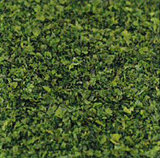HOWASHOJI
Amabito No Moshio Seaweed Salt 300g

Amabito No Moshio Seaweed Salt 300g
Description
Made using the very best natural resources and production methods that originated almost 2500 years ago, Moshio is the earliest known Japanese sea salt.
Despite being an island, Japan is not very well suited for the production of salt, as it lacks salt lakes- and mines. It is therefore solely reliant on the sea to source it salt, but here too, Japan is too humid to simply let the water evaporate in the sun, as dry-climate countries do.Salt production in Japan has therefore always been rather complex and labor intense. For that exact reason, Amabito no Moshio, often called ???Seaweed Salt???, is a unique and top-quality ingredient.
The word ???Moshio??? was first recorded in a collection of the oldest remaining poetry in Japanese history, dating back to the 8th century. ???Shio??? is the Japanese word for salt, and ???Mo??? can in this context be explained as the indication of the type of seaweed used for the production of this sea salt.
Assumed is that the very first method of making salt in Japan was to simply burn seaweed and use the ashes for their salt contents. A more delicate method included placing dried spreads of seaweed on the beach to dry, and then rinse them in vats of saltwater pools. The remainder was then collected and boiled in a clay pot over a wood fire. As the water evaporated, crystalized salt and seaweed strips remained, and once the seaweed was removed, the Moshio would be finished.
The Japanese Shinto religion advocates that the god Shiotsuchi-Oji-no-Kami was in fact responsible for teaching the people how to make salt using this method; and the shrine built in his honor in Miyagi prefecture still celebrates this event by producing Moshio during a festival in his name.As time passed, simpler and more modern techniques for creating salt were created and the focus shifted to mass manufactured table salt, in an industry heavily regulated by the government. Once the regulations were finally lifted and the production of salt opened up again, archeologists who found evidence of how traditional moshio was made, decided to revitalize the craftsmanship.
Now-a-days, Amabito no Moshio is produced at the Kami-Kamagari island, part of a string of seven islands east of Hiroshima. Unpolluted salt water is collected from the Seto Inland Sea and left in a large evaporation pool to concentrate and partly evaporate. Then Hondawara, a seaweed often rumored to have been the only thing eaten by ancient sailors to sustain them during long voyages to China and Korea, is added to infuse the flavor and add a wide range of minerals, as well as give it its signature light beige color. Furthermore, it is said that the Hondawara seaweed is active as an antipyretic, analgesic, and anti-inflammatory. Next, it is cooked in a large iron pot until crystallization forms, after which it is put in a centrifuge to extract more water. Finally, the salt mass is cooked in a large pot over open fire, while continuously stirred with a wooden paddle in order not to roast, but completely dry out and finalize the salt. Sieved by hand, only perfect salt grains remain.
Taking approximately 10 tons of seaweed-infused water to make only 200 kilograms of this ancient sea salt, this product is both labor- and resource intensive and requires experience and craftsmanship.The final product is a well-balanced mixture, characterized by its unique beige color, rich flavor and high level of umami. Mass produced table salt has a high level of purity due to the refined production processes, but therefore lacks all healthful minerals that were once present.
Due to the careful, traditional production method and the addition of seaweed, Moshio contains high levels of calcium, potassium, iron, magnesium and iodine. It is a very dry finishing salt that will compliment any Japanese or Western style dish and add a distinct level of umami to your creations. It is very much recommended on tempura, sashimi and sushi, roasted potatoes, pasta, rice and meat dishes. However, any recipe calling for a pinch (or two) of salt, will benefit from the unique Moshio flavor.
Top chefs, who care about every last detail of their dish have pointed out Moshio is less salty than regular salt, but therefore adds a new flavor experience. Inside tip; try the Moshio in combination with sweet flavors; such as a dark chocolate treat or pudding.
???Amabito no Moshio won the Ministry of International Trade and Industry???s prize for best local product in 1999. In 2018, Amabito no Moshio was included in ???The Wonder 500,??? a government-sponsored program that identifies and promotes a select group of ???local products that are the pride and joy of Japan.













